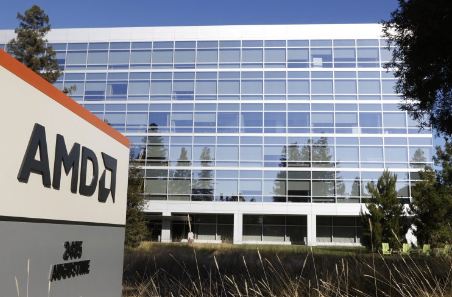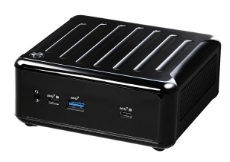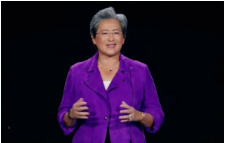- Ameya360 Component Supply Platform >
- Trade news >
- Chip Heads Gauge Silicon Roadmap
Chip Heads Gauge Silicon Roadmap
SANTA CLARA, Calif. — Whether Moore’s law is dead or alive, the semiconductor roadmap leads to both big challenges and opportunities, according to a panel of technologists from AMD, ARM, and Intel at the DesignCon event here.
Speakers were split over whether the number of transistors on a chip is continuing to double every two years as Intel co-founder Gordon Moore observed in 1965. “There’s at least a slowing of node transitions,” said Rob Aitken, a fellow and director of technology at ARM, noting both a three-year span between 16-nm and 10-nm production and the power advantages of “Denard scaling stopped at 90 nm for the kinds of circuits we deal with.”
Intel’s research provides a “five-year process horizon so our internal roadmap is to 5 nm, and we don’t see [Moore’s law] ending in that time,” said Rory McInerney, vice president of Intel’s platform engineering group and director of its server development group.
“Moore’s law is also a law of finance and a law of ambition. There’s an insatiable demand for advanced process technology, and in my area of AI, people are busting their butts to cram as much stuff in [a chip] as possible.”
From the perspective of rival AMD, time between nodes is stretching out, and both chip and fab costs are rising rapidly. “It has a profound impact on our business … we have to innovate more at every node with both architecture and packaging,” said Joe Macri, a corporate fellow and product chief technology officer at AMD.
Looking beyond 5 nm, an expected move “to some sort of vertical nanowire” will cause changes impacting some RTL designs, especially for high-speed circuits. But the changes probably won’t disrupt the abstractions that shield the typical digital logic designer, said Aitken of ARM.
McInerney predicted that a “pipeline of transistor and interconnect” innovations, especially for I/O circuits, will emerge to address a moving series of bottlenecks before the industry hits a wall. “At some point, you get down to single-digit atoms and things get hard to control, so there are physical limits to some parts of the process,” he said.
Panelists agreed that emerging computer and memory architectures will help take up the slack for a slowing Moore’s law.
Work on chips and software that merge memory and storage “will move the needle … we’ll get big speed-ups … we’re about to see the beginning of a whole lot of cool uses of memory,” said Macri, who worked on AMD’s Fiji, a GPU and memory stack announced in June 2015.
ARM’s Aitken pointed to a whole spectrum of advanced packaging techniques emerging, including “an extreme low-end version [in which] cheap standard parts are glued together on a substrate to produce 50-cent things for toys — it’s almost a Wild West.”
Intel’s McInerney said that a mix of new architectures in networking, AI, and memory are creating a renaissance for chip engineers. “It’s a great time to be in architecture design — it feels like a surge in innovations.”
“The top 10 data center players, including Apple, Alibaba, and Amazon, are generally very well-capitalized and acquiring their own silicon teams — they have dedicated, specific problems they are trying to solve,” he said, noting that they are also acquiring a new class of silicon startups.
A new architecture for secure design also needs to emerge, said Aitken, noting the recent discoveryof the Meltdown and Spectre vulnerabilities. He called for new thinking about how to deal with these and future side channel attacks likely to emerge as well as new ways to measure the security of a product.
“When I started in chip design in the mid-1980s, we were doing speculative execution — that’s how we go fast, with one cycle delivering an answer and the next one figuring out if we got it right,” said Macri of the techniques exploited by Meltdown and Spectre.
The use of speculative execution and the threat of hacks “won’t change. What changes is our perception of the need for end-to-end security. We all live in glass houses … it’s something we live with every day — a world that will never be perfect.”
Intel’s McInerney and analyst Bob O'Donnell of Technalysis Research, who moderated the panel, praised the industry for collaborating on fixes still in progress for the flaws originally discovered by Google. The incident was a rallying call for better security tools, said McInerney.
“We have tools for timing and functional test. Now we need tools that allow you to test for these attacks at a basic building block level — there’s a lot of innovation needed here.”
Online messageinquiry

AMD Takes Center Stage at CES
- Week of hot material
- Material in short supply seckilling
| model | brand | Quote |
|---|---|---|
| CDZVT2R20B | ROHM Semiconductor | |
| BD71847AMWV-E2 | ROHM Semiconductor | |
| RB751G-40T2R | ROHM Semiconductor | |
| TL431ACLPR | Texas Instruments | |
| MC33074DR2G | onsemi |
| model | brand | To snap up |
|---|---|---|
| BU33JA2MNVX-CTL | ROHM Semiconductor | |
| ESR03EZPJ151 | ROHM Semiconductor | |
| BP3621 | ROHM Semiconductor | |
| TPS63050YFFR | Texas Instruments | |
| IPZ40N04S5L4R8ATMA1 | Infineon Technologies | |
| STM32F429IGT6 | STMicroelectronics |
- Week of ranking
- Month ranking
Qr code of ameya360 official account
Identify TWO-DIMENSIONAL code, you can pay attention to


Please enter the verification code in the image below:

























